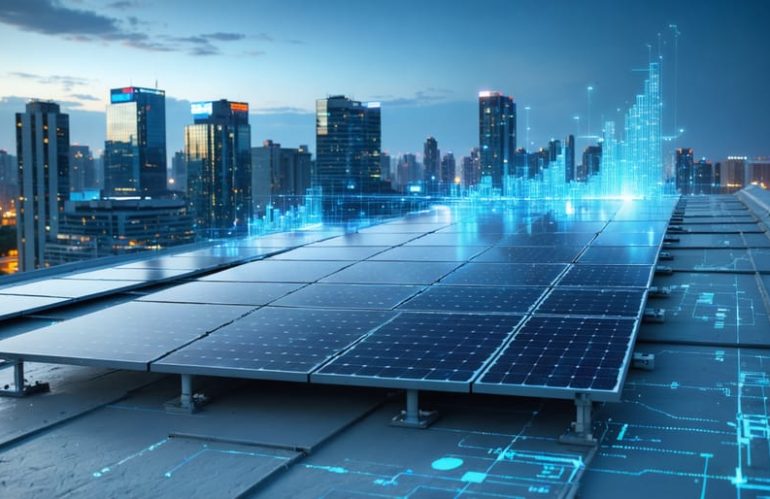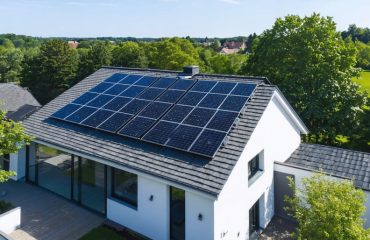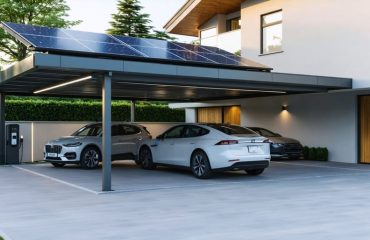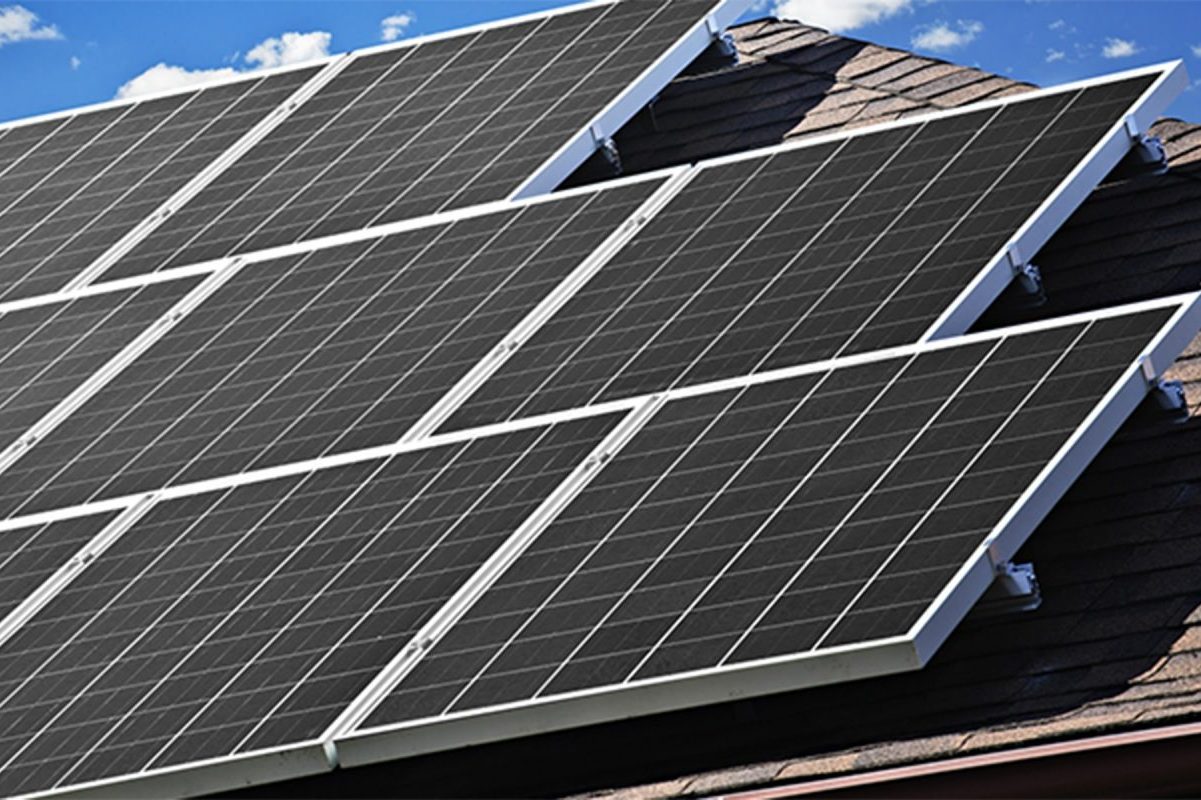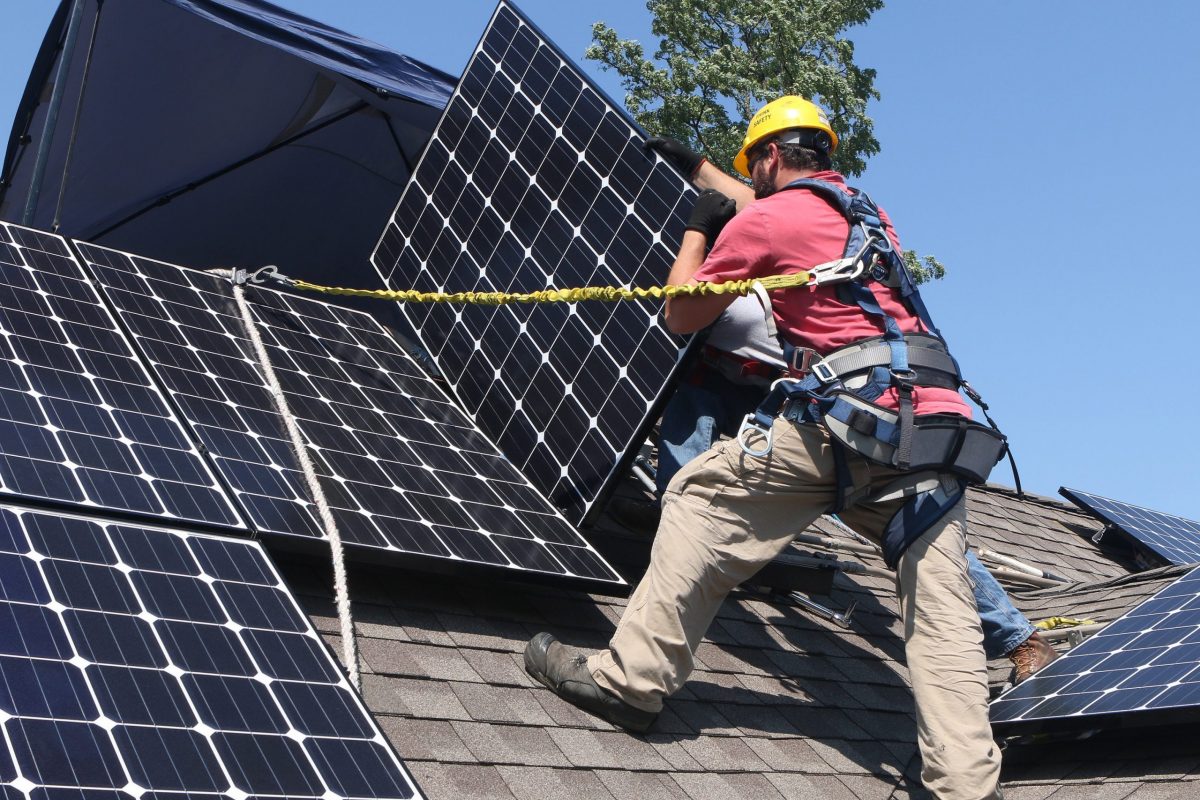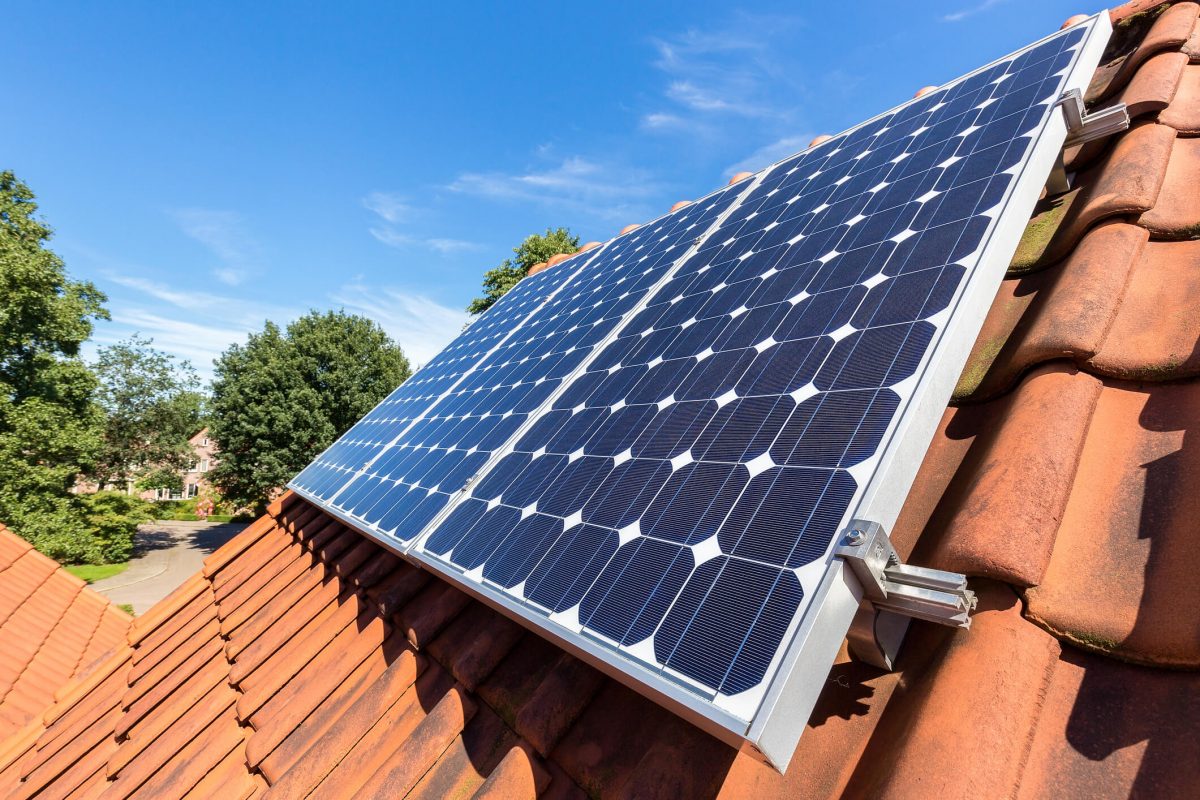The race for sustainable energy has transformed commercial solar panel manufacturing into a $150 billion industry, with leading manufacturers revolutionizing how businesses power their operations. From Tesla’s high-efficiency panels to LG’s innovative bifacial technology, today’s commercial solar solutions deliver unprecedented power generation capabilities while offering compelling returns on investment.
As businesses increasingly pivot toward renewable energy, commercial solar panel manufacturers have responded with groundbreaking advancements in durability, efficiency, and cost-effectiveness. Modern panels now routinely achieve conversion rates above 20%, while sophisticated manufacturing processes have driven down production costs by over 80% in the past decade. This perfect storm of improved technology and decreased costs has made commercial solar installations more accessible and profitable than ever before.
The competitive landscape features established industry giants like Canadian Solar and Jinko Solar alongside innovative newcomers disrupting the market with specialized solutions for specific commercial applications. Whether powering massive industrial facilities or modest retail operations, these manufacturers offer diverse product lines engineered to meet exact business requirements while maximizing energy production and financial returns. Understanding the key players, their technological capabilities, and their track record of reliability is essential for making informed decisions about commercial solar investments.
Leading Commercial Solar Panel Manufacturers
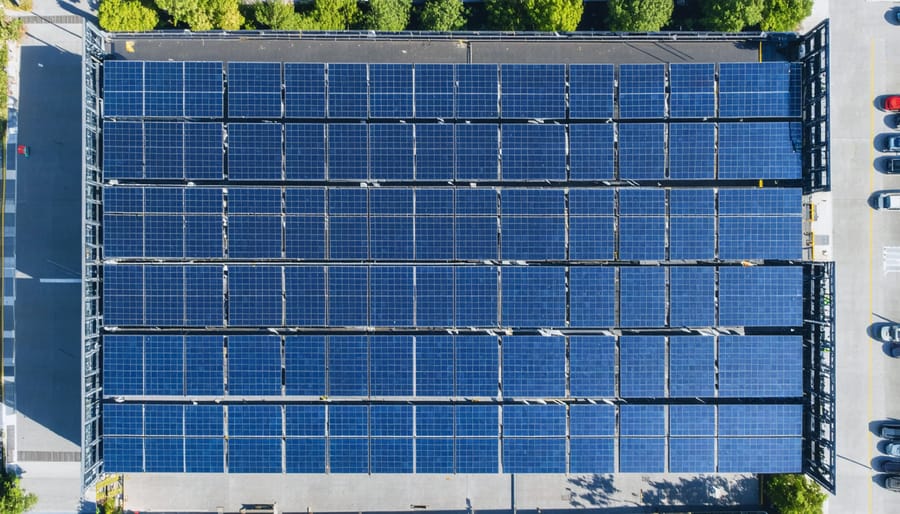
Industry Giants and Their Innovations
Several leading manufacturers have consistently pushed the boundaries of solar technology, making solar power more efficient and affordable. SunPower, a US-based company, stands out with their Maxeon cell technology, achieving an impressive 22.8% efficiency rating in their commercial panels. Their innovative back-contact solar cells eliminate front-facing metal ribbons, maximizing the panel’s sunlight-capturing surface.
Canadian Solar has revolutionized the industry with their BiKu bifacial modules, which can capture sunlight from both sides, increasing energy yield by up to 30% in optimal conditions. Their commitment to durability shows in their enhanced weather resistance and reduced degradation rates.
First Solar, specializing in thin-film technology, has made significant strides with their Series 6 modules. These panels use less raw material while maintaining high performance, making them both cost-effective and environmentally friendly. Their advanced manufacturing process reduces carbon footprint by 67% compared to conventional panels.
JinkoSolar’s Tiger Pro series showcases their innovative tiling ribbon technology, which eliminates the gap between cells, boosting power output significantly. Meanwhile, LONGi Solar has pioneered mono PERC technology, offering superior performance in low-light conditions and higher energy yields in limited spaces.
These manufacturers continue to invest heavily in research and development, focusing on improving efficiency, reducing costs, and enhancing durability to make solar energy more accessible to businesses worldwide.
Emerging Players Changing the Game
The solar manufacturing landscape is witnessing an exciting transformation as innovative newcomers challenge traditional market leaders. REC Solar Alpha, a Singapore-based manufacturer, has gained attention for their heterojunction technology, which combines different cell types to achieve higher efficiency rates while maintaining affordability. Their panels consistently exceed 21% efficiency, making them increasingly popular for commercial installations.
Risen Energy, emerging from China, has made waves with their low-carbon manufacturing processes and impressive bifacial modules that can capture light on both sides. Their commitment to sustainability extends beyond just their products to their entire manufacturing chain, resonating with environmentally conscious businesses.
Canadian company Silfab Solar has distinguished themselves with their North American manufacturing presence and premium quality control standards. Their automated production lines and rigorous testing procedures have resulted in some of the lowest warranty claim rates in the industry.
Meyer Burger, a Swiss company, has transformed from equipment manufacturer to panel producer, bringing their cutting-edge heterojunction technology directly to market. Their innovative approach includes transparent solar tiles and building-integrated photovoltaics, opening new possibilities for commercial applications.
These emerging players are driving innovation through advanced manufacturing techniques, improved efficiency ratings, and creative solutions for diverse installation needs. Their presence is helping to make solar more accessible and efficient while pushing established manufacturers to continue innovating.
Commercial Solar Panel Technology Advancements
Efficiency Breakthroughs
Recent efficiency breakthroughs in solar technology have pushed commercial solar panels to new heights of performance. Leading manufacturers have achieved conversion rates exceeding 23% in mass-produced panels, with some premium models reaching up to 25%. This means today’s panels can generate significantly more power from the same roof space compared to models from just five years ago.
The introduction of heterojunction technology (HJT) has been a game-changer, combining different cell materials to capture a broader spectrum of sunlight. Major manufacturers are now incorporating bifacial designs, which can capture reflected light from both sides of the panel, potentially increasing energy yield by 5-30% depending on installation conditions.
Improved manufacturing processes have also led to better durability and reduced degradation rates. Modern panels now lose only about 0.3% efficiency per year, compared to the 1% annual decline common in older models. This means today’s panels maintain their high performance levels for longer, offering better long-term value for commercial installations.
Advanced anti-reflective coatings and smart wire technology have further enhanced light absorption while reducing energy losses. These improvements, combined with more efficient inverter systems, help commercial buildings capture more solar energy throughout the day, even in less-than-ideal weather conditions.
For business owners, these efficiency gains translate directly to improved return on investment, with many systems now achieving payback periods of 4-6 years, depending on location and energy consumption patterns.
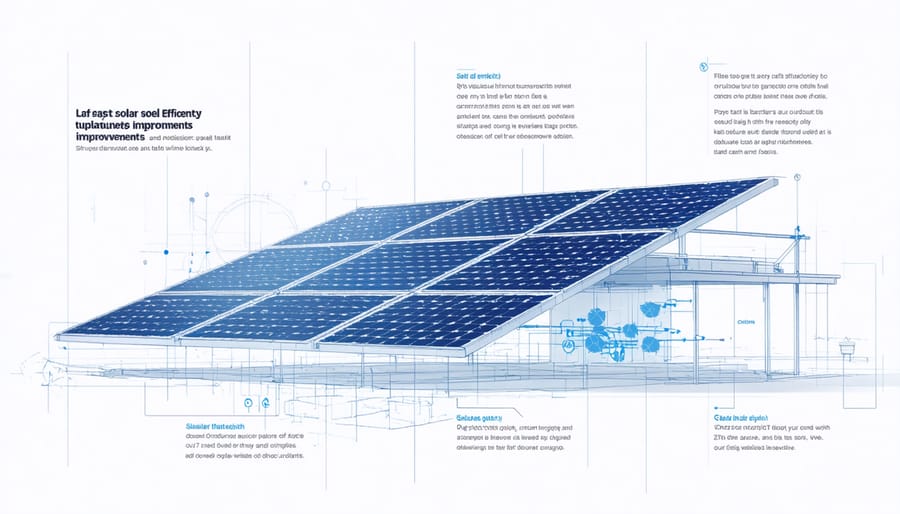
Durability and Longevity Features
Modern commercial solar panels are built to withstand the test of time, incorporating advanced materials and construction techniques that significantly enhance their durability. Today’s leading manufacturers employ tempered glass, robust aluminum frames, and specialized protective backsheets that shield panels from harsh environmental conditions.
Most commercial solar panels now come with impressive weatherproofing features, capable of handling extreme temperatures, heavy snow loads, and wind speeds up to 140 mph. The latest innovations include self-cleaning glass coatings that reduce dust accumulation and enhance light absorption, contributing to maintaining optimal panel performance throughout their lifespan.
Manufacturers have also made significant strides in preventing potential induced degradation (PID), a common issue that historically affected panel efficiency over time. Advanced encapsulation materials and improved cell designs help ensure panels maintain their power output for decades. Most reputable manufacturers now offer warranties ranging from 25 to 30 years, with guaranteed power output of at least 80% by the end of the warranty period.
The durability of modern panels extends beyond physical resilience. Anti-reflective coatings enhance light absorption while protecting against UV damage, and sophisticated junction boxes prevent moisture infiltration. These features work together to ensure panels can withstand daily exposure to the elements while maintaining consistent energy production.
Recent developments in bifacial technology have introduced double-glass construction, further enhancing panel durability while boosting energy production through rear-side light capture. This innovation represents the industry’s commitment to combining longevity with improved performance.
Quality Standards and Certifications
Quality standards and certifications play a crucial role in ensuring commercial solar panels meet performance, safety, and reliability requirements. The most widely recognized certification is the IEC 61215, which tests panels for their ability to withstand various environmental conditions and maintain performance over time. This certification involves rigorous testing for temperature cycling, humidity exposure, and mechanical load resistance.
In the United States, UL certification (specifically UL 1703) is essential for commercial solar panels, demonstrating compliance with safety standards and fire resistance requirements. The UL certification process evaluates electrical safety, fire resistance, and overall product durability.
Another important certification is the ISO 9001, which ensures manufacturers follow strict quality management systems throughout their production process. This certification focuses on consistent manufacturing practices and continuous improvement in product quality.
For maximum energy production efficiency, look for panels that meet or exceed the California Energy Commission (CEC) requirements. The CEC maintains a list of approved modules that have demonstrated reliable performance and energy conversion efficiency.
The PVUSA Test Conditions (PTC) rating offers a more realistic measure of panel performance compared to Standard Test Conditions (STC), as it considers real-world factors like wind speed and ambient temperature. Many manufacturers now include both ratings to provide transparency about actual performance expectations.
For environmental consciousness, some manufacturers pursue additional certifications like Carbon Footprint Certification or RoHS compliance, which verify eco-friendly production methods and materials. These certifications are becoming increasingly important as businesses focus on sustainability goals.
When selecting commercial solar panels, always verify that they carry these essential certifications:
– IEC 61215 for durability and performance
– UL 1703 for safety standards
– ISO 9001 for quality management
– CEC listing for efficiency validation
– PTC rating for real-world performance metrics
These certifications ensure your investment meets industry standards and provides reliable, long-term performance for your commercial installation.
Commercial Installation Considerations
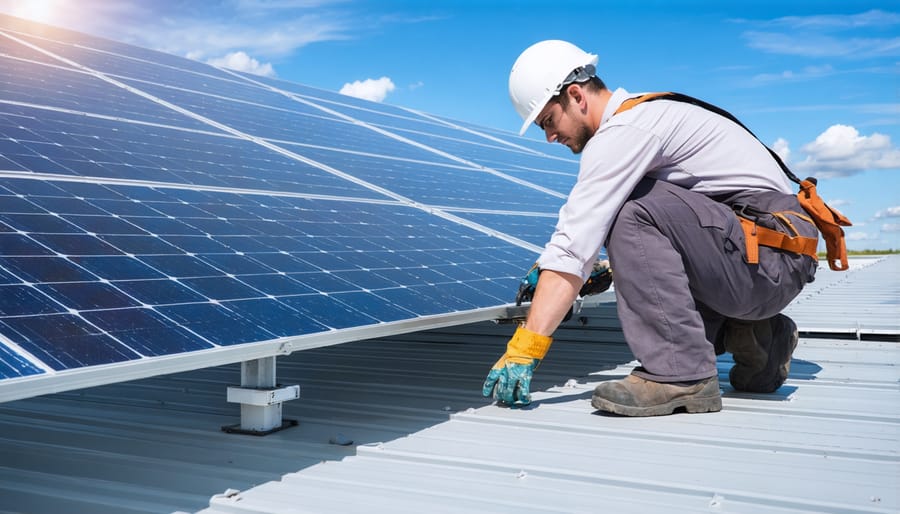
Warranty and Support Services
Leading commercial solar panel manufacturers typically offer comprehensive warranty packages that provide long-term peace of mind for businesses investing in solar energy. Most tier-one manufacturers provide 25-30 year performance warranties, guaranteeing that their panels will maintain at least 80-85% of their original power output over this period. Product warranties, which cover manufacturing defects and material quality, usually range from 10-15 years.
Companies like SunPower and LG stand out with their all-inclusive 25-year warranties covering product, performance, and labor. These comprehensive packages help businesses maximize installation efficiency while reducing long-term maintenance concerns.
After-sales support varies significantly among manufacturers. Industry leaders typically offer dedicated commercial support teams, online monitoring platforms, and rapid response maintenance services. Some manufacturers maintain local technical support centers, providing quick resolution for warranty claims and technical issues. Others partner with certified installers to ensure proper installation and ongoing maintenance.
When evaluating warranties, businesses should consider not just the length of coverage but also the manufacturer’s financial stability and track record of honoring claims. It’s worth noting that some manufacturers offer additional benefits like performance monitoring apps, professional cleaning services, and extended warranty options for premium installations.
Remember to carefully review warranty documentation and support services before making a final decision, as these factors significantly impact the long-term value of your solar investment.
Cost-Benefit Analysis
When evaluating commercial solar panel manufacturers, conducting a thorough solar power ROI analysis is essential for making an informed decision. Premium manufacturers typically command higher upfront costs but often deliver superior efficiency ratings and longer warranties, potentially offering better long-term value. For example, tier-1 manufacturers might charge 15-20% more initially but provide panels with 20-25% efficiency rates and 25-30 year warranties.
Mid-range manufacturers balance cost and performance, usually offering panels with 18-20% efficiency and 20-25 year warranties at more moderate prices. While these may not match premium efficiency ratings, they often provide excellent value for commercial installations where roof space isn’t a primary constraint.
Budget manufacturers can reduce initial investment by 30-40% compared to premium options, but typically offer lower efficiency ratings (15-17%) and shorter warranty periods. However, these panels can still be viable for projects with ample installation space and shorter payback requirements.
Key factors affecting ROI include:
– Energy production over time
– Warranty coverage and manufacturer stability
– Installation and maintenance costs
– Local electricity rates
– Available tax incentives and rebates
– Panel degradation rates
Most commercial installations achieve payback periods between 4-8 years, with premium panels typically reaching the shorter end of this range due to higher energy production and reliability.
The commercial solar panel manufacturing industry continues to evolve rapidly, driven by technological innovations and increasing demand for sustainable energy solutions. As we’ve explored, leading manufacturers like SunPower, LG, and First Solar have established themselves as reliable choices for commercial installations, offering excellent efficiency ratings and comprehensive warranty coverage.
The future outlook for commercial solar panel manufacturing appears promising, with continued improvements in panel efficiency, durability, and cost-effectiveness on the horizon. Emerging technologies like bifacial panels and enhanced energy storage solutions are set to revolutionize the commercial solar landscape further. Additionally, manufacturers are increasingly focusing on sustainable production methods and recycling programs, making solar energy an even greener choice.
For businesses considering solar installation, it’s crucial to partner with established manufacturers who demonstrate strong financial stability, proven track records, and robust warranty support. As production scales up and technology advances, we can expect to see further price reductions and improved return on investment for commercial solar installations.
The industry’s commitment to innovation, combined with growing environmental awareness and favorable government policies, suggests that commercial solar adoption will continue to accelerate. Whether you’re a small business owner or managing a large corporation, now is an excellent time to explore solar energy solutions and take advantage of the mature, competitive market of quality manufacturers.

